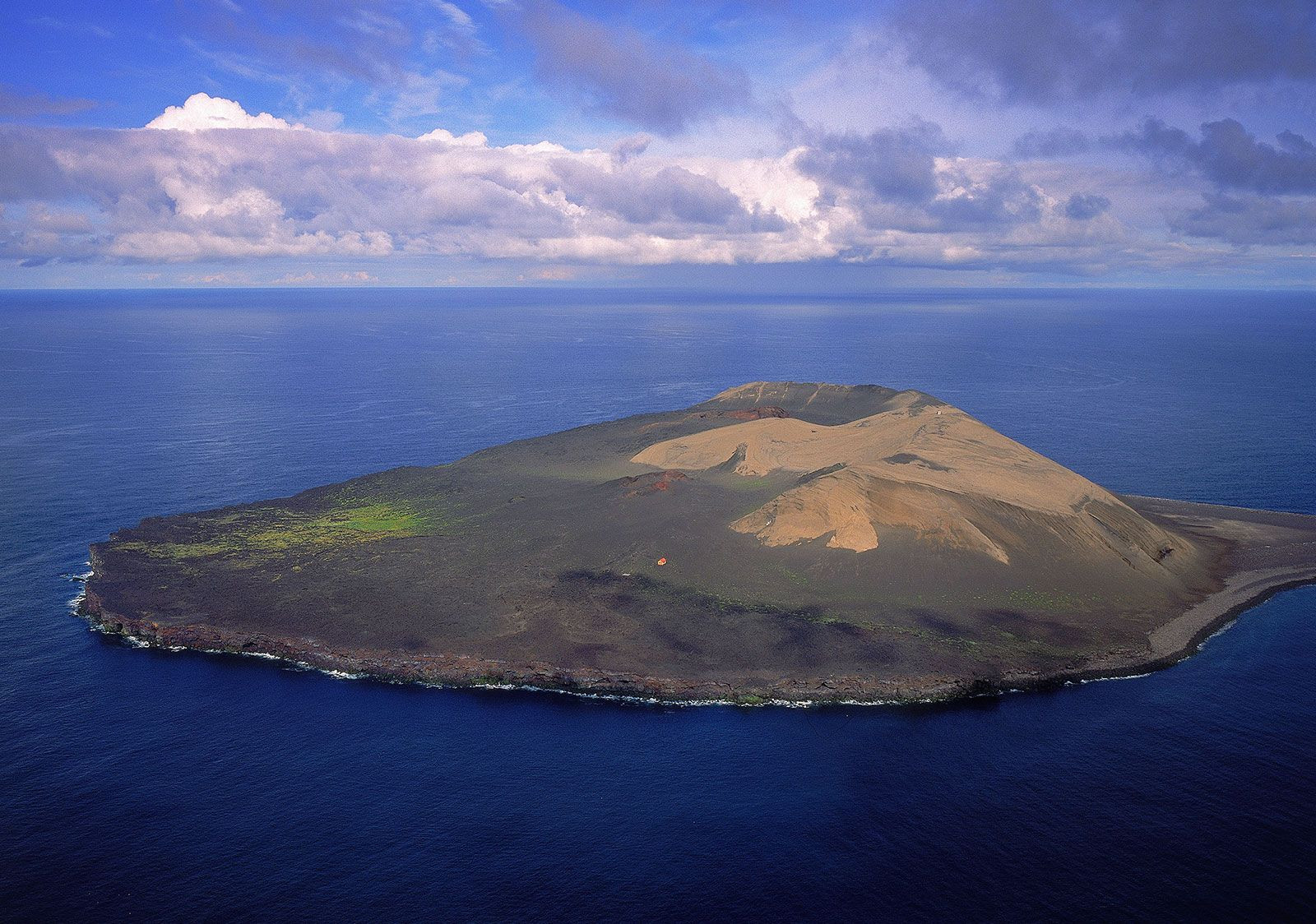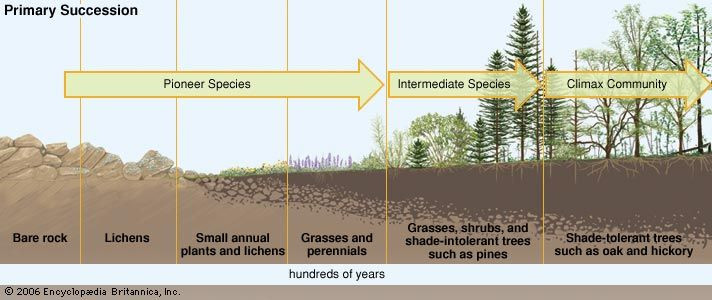Primary succession is a fascinating ecological process that begins in lifeless areas where no soil exists. Think of newly formed volcanic islands, land exposed by retreating glaciers, or barren rock landscapes. In these harsh environments, life seems impossible at first glance. However, nature has its way of initiating life, and this is where pioneer species come into play. These hardy organisms are the first colonizers, playing a crucial role in transforming barren landscapes into thriving ecosystems through primary succession.
Surtsey Island, a volcanic island in Iceland, exemplifies primary succession. Emerging from the Atlantic in 1963, it was initially barren rock. Pioneer plants like sea rocket and mosses quickly colonized, demonstrating the first steps of ecosystem development.
Understanding Primary Succession and Barren Environments
Primary succession is the ecological process that occurs in essentially lifeless areas – environments devoid of soil and previous vegetation. These areas are often characterized by extreme conditions such as lack of nutrients, water scarcity, and intense sunlight or wind exposure. Examples include:
- Volcanic landscapes: Newly formed lava flows or volcanic ash deposits.
- Glacial retreats: Bare rock exposed after glaciers recede.
- Sand dunes: Unstable and nutrient-poor sand formations.
- Exposed bedrock: Areas where erosion has removed topsoil.
In such harsh settings, conventional plant life cannot easily establish itself. This is where pioneer species, with their unique adaptations, are essential for initiating ecological change.
The Multifaceted Role of Pioneer Species
Pioneer species are not merely the first inhabitants; they are ecosystem engineers that fundamentally alter their environment, paving the way for subsequent communities. Their roles are diverse and critical:
Soil Formation: The Foundation of Life
One of the most significant roles of pioneer species is soil development. Bare rock surfaces lack the organic matter and nutrients necessary for most plants to grow. Pioneer species, particularly lichens and mosses, initiate soil formation through several mechanisms:
- Weathering of Rock: Lichens, in a symbiotic relationship between fungi and algae, secrete acids that chemically break down the rock surface. Mosses also contribute to this process with their acidic secretions. This physical and chemical breakdown fragments the rock into smaller particles.
- Organic Matter Accumulation: As pioneer species grow, they capture dust, rainwater, and atmospheric nutrients. When they die and decompose, their organic material mixes with the fragmented rock particles. This decaying organic matter, known as humus, enriches the mineral substrate and starts forming rudimentary soil.
Nutrient Enrichment: Creating Fertile Ground
Pioneer species also improve the nutrient availability in barren environments:
- Nitrogen Fixation: Certain pioneer species, especially cyanobacteria and some lichens, can fix atmospheric nitrogen. Nitrogen is a crucial nutrient for plant growth, and its introduction by pioneer species enriches the nutrient-poor environment, making it more hospitable for later colonizers.
- Carbon Input: Through photosynthesis, pioneer species capture carbon dioxide from the atmosphere and convert it into organic compounds. This carbon is incorporated into their biomass and eventually enters the developing soil as they decompose, increasing soil fertility.
Habitat Modification: Sheltering Future Communities
Pioneer species modify the microclimate and habitat conditions, making them less extreme and more suitable for other species:
- Shade and Moisture Retention: Pioneer plants, even small mosses and lichens, can provide some shade to the exposed surface, reducing evaporation and temperature extremes. This slight moderation of the microclimate allows for better moisture retention in the developing soil.
- Wind and Erosion Reduction: The presence of pioneer species, even sparsely distributed, can help stabilize the substrate, reducing wind and water erosion. This stabilization is crucial for preventing the loss of the newly forming soil and creating a more stable base for future plant communities.
This diagram illustrates primary succession, starting with pioneer species colonizing bare rock. Over time, they modify the environment, leading to more complex plant communities and eventually a climax community.
Examples of Key Pioneer Species
The specific types of pioneer species vary depending on the environment, but some common examples include:
- Lichens: Highly effective at colonizing bare rock due to their ability to withstand desiccation and their rock-weathering capabilities.
- Mosses: Similar to lichens, mosses can tolerate harsh conditions and contribute significantly to soil development through organic matter accumulation and rock breakdown.
- Microorganisms (Bacteria and Cyanobacteria): Often the very first colonizers, even before lichens and mosses. They can survive in minimal conditions and initiate nutrient cycling.
- Certain Plants: Some plant species are adapted to survive in nutrient-poor and exposed environments. Examples include sea rocket on coastal dunes and certain grasses in volcanic areas.
Pioneer Species and the Stages of Primary Succession
Primary succession is a gradual process, and pioneer species initiate the first stage. As they modify the environment, they pave the way for the next wave of colonizers – intermediate species like grasses, ferns, and small shrubs. These species further alter the soil, increase shade, and add more organic matter.
Over time, this process continues, with each successive community changing the habitat in ways that favor new species while making it less suitable for the previous inhabitants. Eventually, in many ecosystems, primary succession leads to a climax community – a relatively stable and mature ecosystem, often dominated by trees in terrestrial environments.
Conclusion: Pioneers of the Ecosystem
Pioneer species are the unsung heroes of ecological succession. They are not merely the first to arrive; they are the essential catalysts that transform barren landscapes into habitable ecosystems. By initiating soil formation, enriching nutrient availability, and modifying harsh conditions, pioneer species create the foundation for more diverse and complex communities to flourish. Their role is fundamental in the long-term development and sustainability of terrestrial ecosystems, demonstrating nature’s remarkable capacity to create life even from seemingly nothing.


 primary ecological succession
primary ecological succession